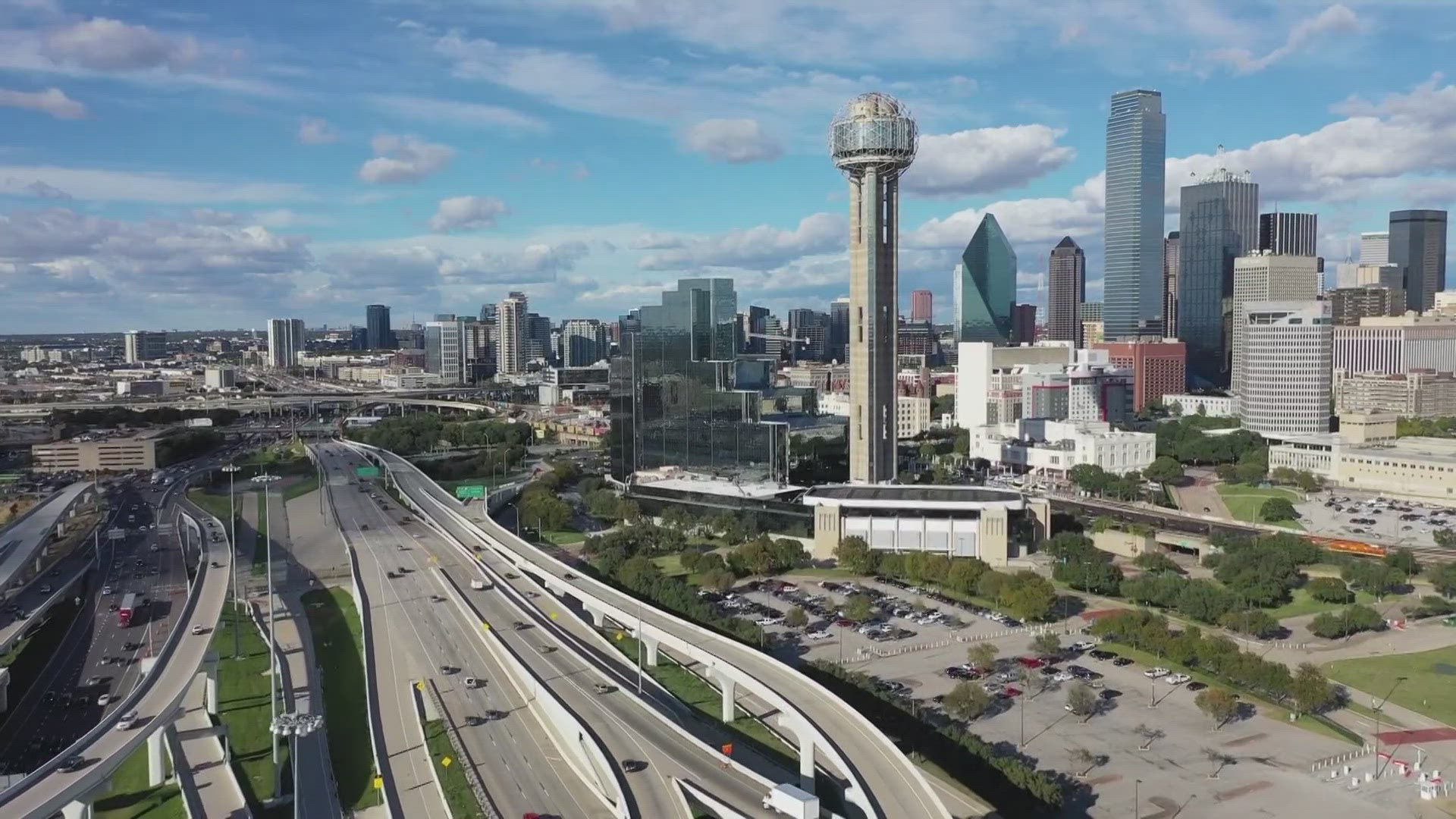SAN ANTONIO — You've heard of Dallas-Fort Worth. Miami-Fort Lauderdale, Minneapolis-St. Paul, but what about San Antonio-Austin?
People are flocking to San Antonio from other cities, states, and even countries. So many in fact, long-term developers say there is a chance, albeit small, that San Antonio and Austin will grow into a major metropolitan area.
The Dallas-Fort Worth effect
Dallas has a population of about 1.3 million people. 32 miles to the west Forth Worth has 950,000. The entire Dallas-Fort Worth Metroplex boasts 7.6 million residents altogether.
"They had a long established track history of working together. Both the Dallas-Fort worth sides. And their 16 county large transportation planning area, they've had decades of experience working with each other," Clifton Hall, the Transportation Planning Manager for the Alamo Area MPO told us.
Head south on I-35 you'll find Austin with a population of about 975,000, and 73 miles away sits San Antonio with a population of close to 1.5 million. The emerging San Antonio-Austin metro area as a whole, totals about 5 million people. But, with both cities exploding in numbers could we see Austin and San Antonio grow together, just like Dallas and Fort Worth? And is San Antonio ready for such rapid expansion?
"You would have to see equal commuting between Austin and San Antonio or New Braunfels and San Marcos in order for them to be considered the same metropolitan area," said Hall.
What will it take?
So far that hasn't happened, but it hasn't stopped planning in San Antonio, when it comes to new developments, roads, water, and electricity.
"Areas where there are currently jobs or they're projected to be future jobs, in those areas, they're considered employment centers or growth centers. And we would like to see more residential growth in those areas and hopefully reduce the pressure that could be experienced in some of our existing neighborhoods," Rudy Nino, the Asst. Director of COSA Planning added.
"Part of our planning process is that we have diversified our water supply. So we used to be only on Edwards Aquifer water. Now we have water from seven different sources, 13 different water projects.," Donovan Burton, a SAWS spokesperson said.
But, SAWS isn't just diversifying for the future, but also stressing conservation.
"Conservation also gets us to lower demand for the future. And so that helps balance out the the need for new supplies, while at the same time the need for new infrastructure," said Burton.
LawnStarter analyzed numbers from The Texas Water Development Board. It found the population of the 13 county San Antonio-Austin metro area will jump in size from the 5 million it sits at today, to closer to 6 million in 2030. By the year 2050 projections take the numbers over 8 million people, which would eclipse the Dallas Fort-Worth Metroplex.
CPS Energy also says they're looking ahead long-term, by increasing capacity through the acquisition of gas plants, and by making a more blended portfolio including balancing reliability with affordability, a smaller carbon footprint, a more experienced workforce, and the expansion of renewable energy.
But what about the roads? The Alamo Area Metropolitan Planning Organization is already planning on double decker highways on the north side of San Antonio to keep traffic moving as the city grows. But usage of highways will ultimately determine if Austin and SA grow+ together. But because the two cities are more than 70 miles apart, Hall says the chance of them growing as one, is rather low.
"Right now, for us in San Antonio, being over an hour apart, it's going to be really difficult for those regular commuting patterns to develop," Hall told us.
You can check out video from the I-35 expansion project here. CPS Energy also has their power generation plan.

